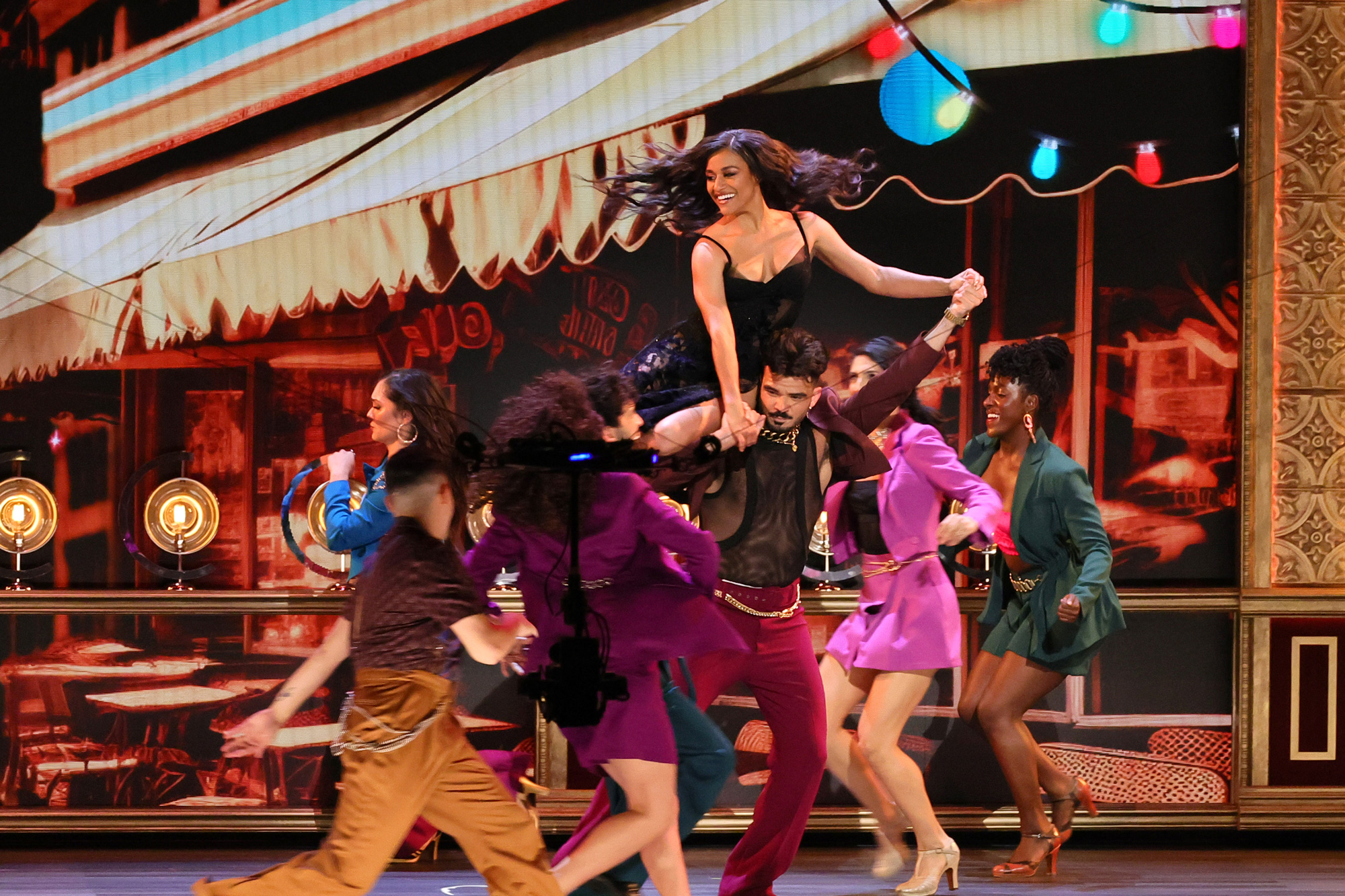Tony Awards Recap: Writer-Less, Dance-Filled
First things first: It was an extraordinary year for dancing and choreography on Broadway, and last night’s Tony Awards telecast was the beneficiary. Between the swirling expressionist ensemble in which Steven Hoggett cocoons the macabre tale of Sweeney Todd, the leaping, tumbling Jennifer Weber youthquake accompanying the journey of a post-Romeo Juliet in & Juliet, and the consummate artistry of master dancemakers (and past Tony winners) Susan Stroman and Casey Nicholaw, represented this season by New York, New York and Some Like It Hot, the 76th Annual Tony Awards show was going to be bursting with movement no matter what.
But without anyone to create a script, thanks to the ongoing strike by the union of screen and television writers, dance became even more prominent than it would have been. Host Ariana DeBose, with an ensemble that by the end totaled 16 dancers, opened the proceedings with Karla Puno Garcia’s vivid choreography—spilling from an upstairs dressing room of the United Palace Theatre down to the ornate lobby, through the auditorium, and onto the stage, followed every step of the way by swooping camerawork. And when the time came to honor the winners of the lifetime achievement awards, John Kander and Joel Grey, DeBose was joined by Julianne Hough to perform Garcia’s version of “Hot Honey Rag,” from Chicago.

As a fellow scribe and a one-time member of the Writers Guild of America, I fully support the strike. I must admit, however, that I didn’t miss the missing words; and, apart from a brief moment where DeBose lost the thread, neither did anyone on the stage. There were multiple shout-outs in support of the writers, and gratitude for the last-minute agreement that allowed the show to proceed. But the eloquence and emotion of these affairs come from the acceptance speeches, not scripted introductions and banter—whose absence allowed time for more snippets from nominated performances, and for efficiencies that facilitated an on-time close. The large onstage projections identifying who was who and what was what kept it all legible.
What made it fun was the joy—verging on delirium—that greeted all the performers filing offstage after their numbers, past those waiting to go on next. The Tonys are a competition, but you wouldn’t have known it from the backstage vibe captured in the show. The history-making Tonys won by two nonbinary actors—J. Harrison Ghee, the blossoming Jerry/Daphne of Some Like It Hot, and Alex Newell, the showstopping Lulu of Shucked—left the other nominees cheering.

The warmth and familial admiration pervading so much of the evening came through when Nicholaw accepted the choreography prize for Some Like It Hot. He started out thanking his 90-year-old mother and segued into heartfelt appreciation for the contribution of Glen Kelly, who did the show’s dance arrangements—a crucial element of musical theater that lacks a Tony category of its own. Unfortunately, Nicholaw’s prize, and Jeanine Tesori and David Lindsay-Abaire’s for scoring Kimberly Akimbo, were awarded before the CBS broadcast, in the streamed segment called “The Tony Awards: Act One”—so the television audience entirely missed the awards for the very things that make musicals musical.
Which prompts another observation. Dance is indisputably one half of what makes musicals musical. With five Tonys, the most of the evening, Kimberly Akimbo was the clear favorite of the Tony voters, who seem irresistibly drawn to what the New York Times theater critic Jesse Green calls “nerdicals”—serious shows with small casts and minimal opportunities for what we normally think of when we picture Broadway dance. This leaves gorgeous extravaganzas like New York, New York and Some Like It Hot at something of a disadvantage in the all-important Best Musical category. Shouldn’t there be an additional Tony honoring simple showmanship? A play might win it now and again, but I’ll bet that most of the time, the winner would have a kick line.




